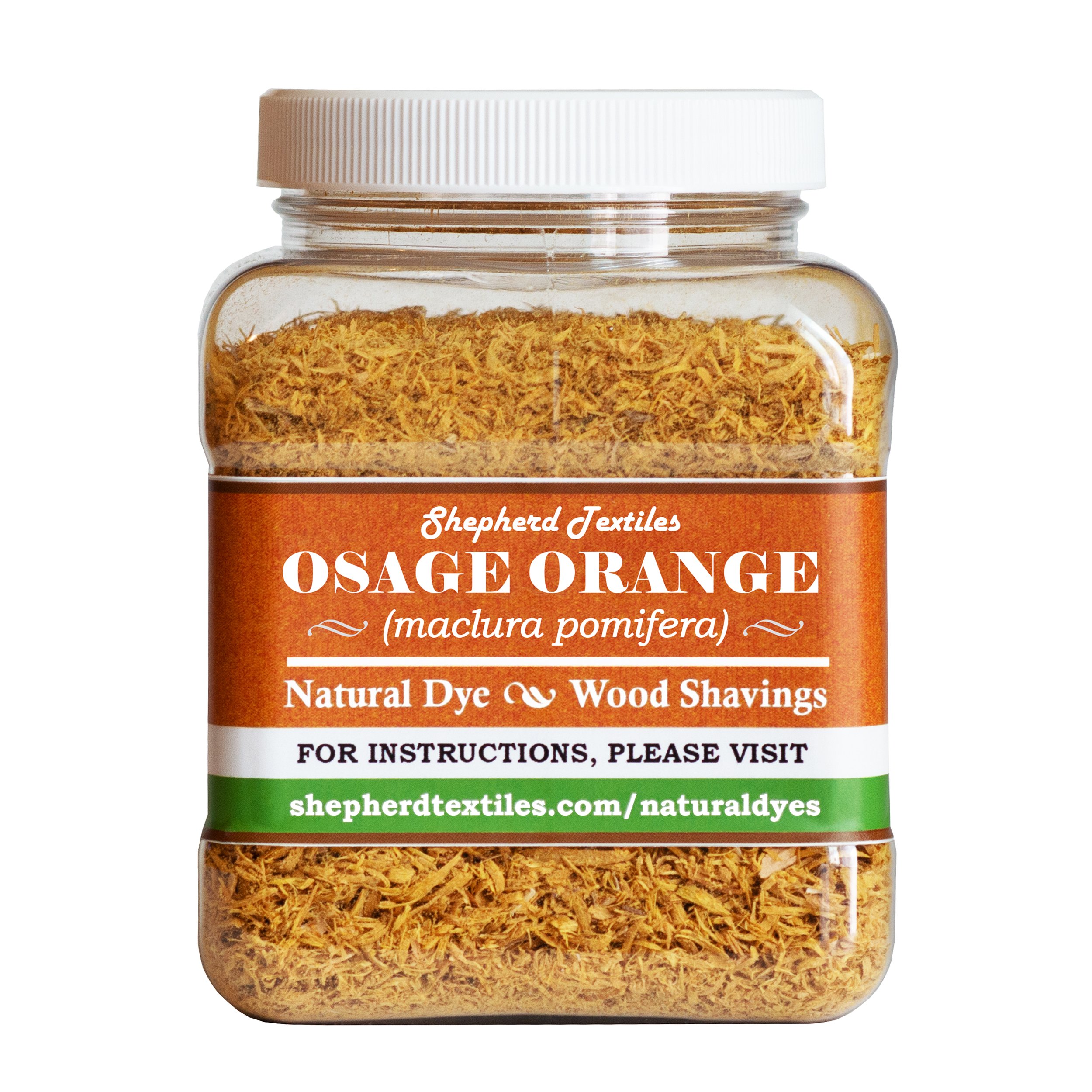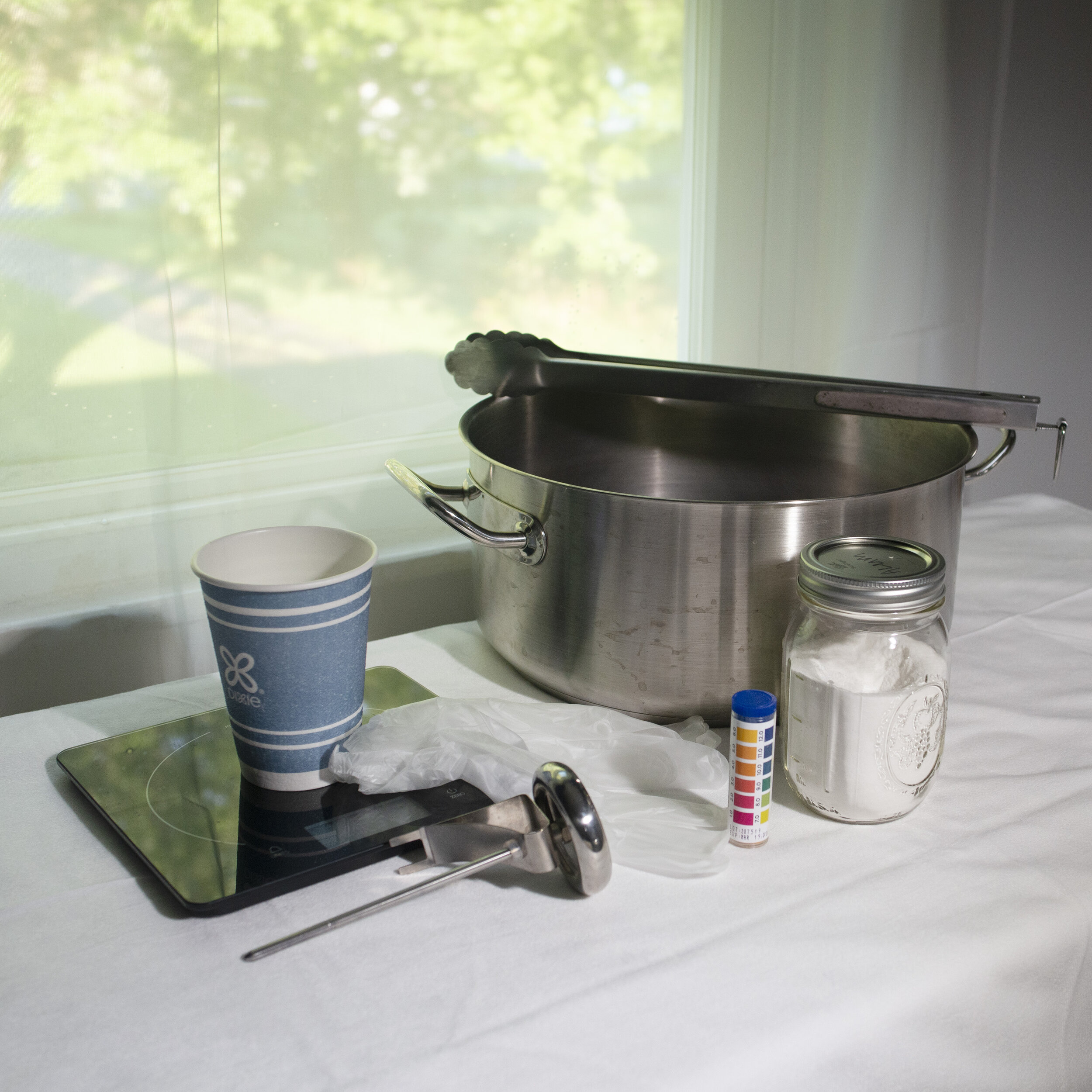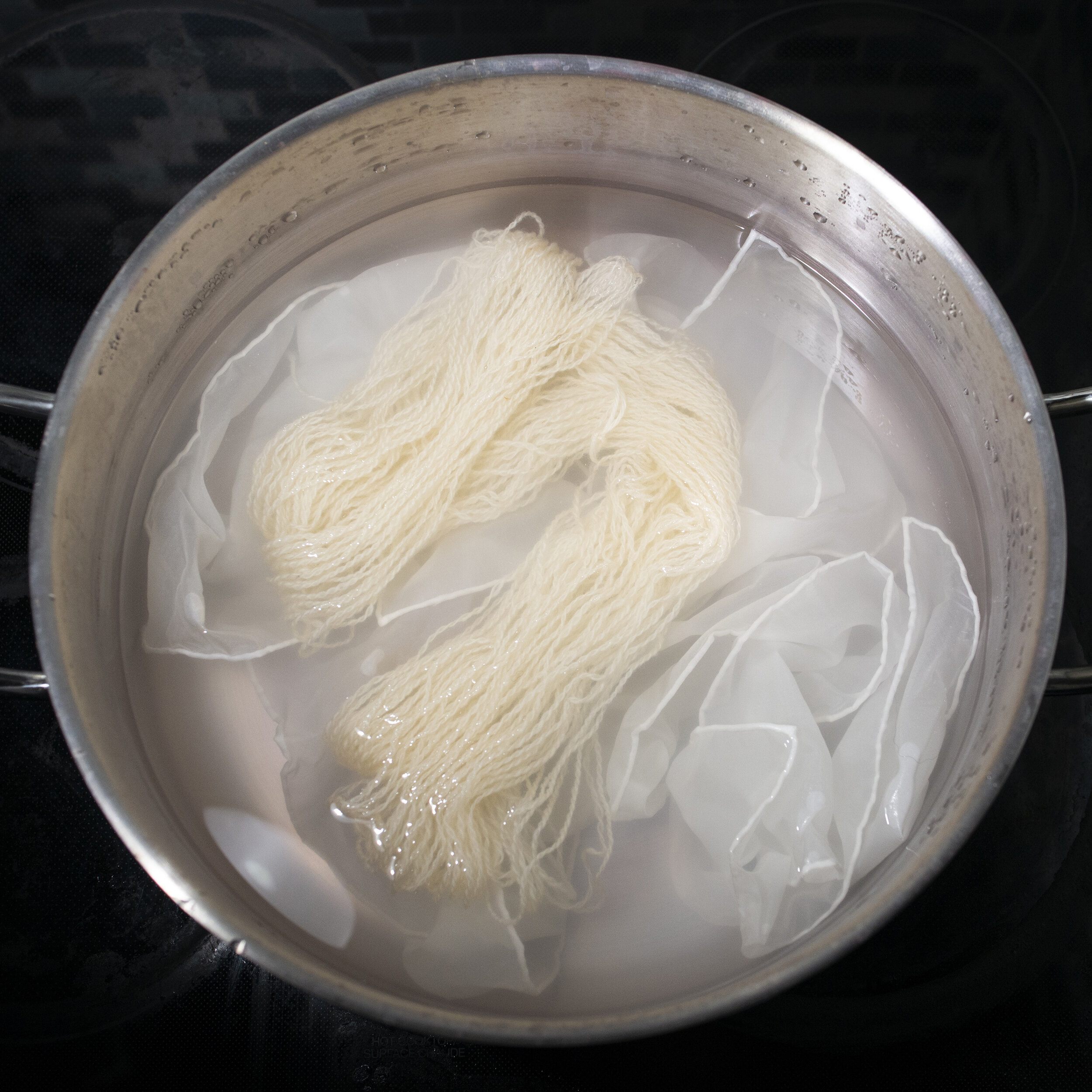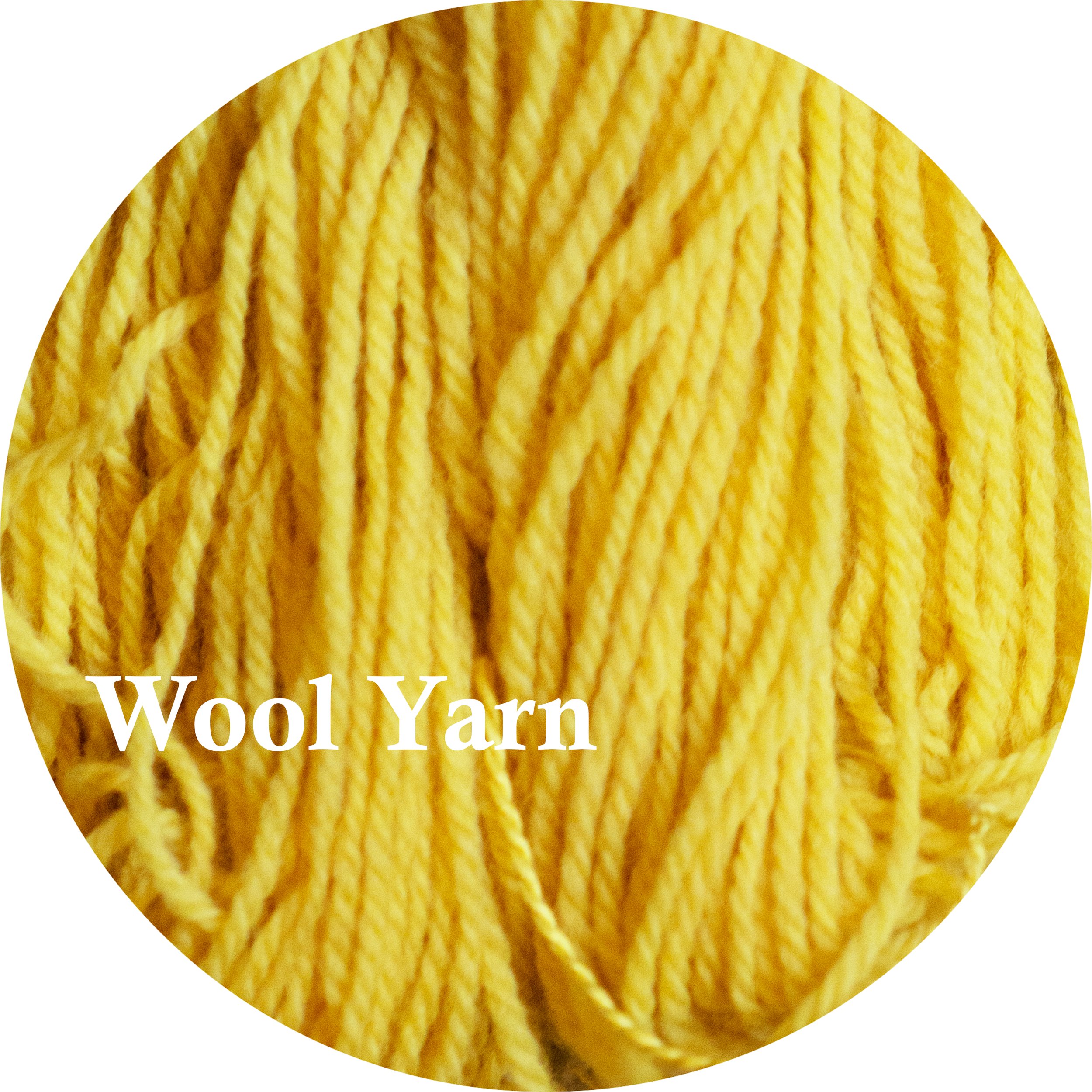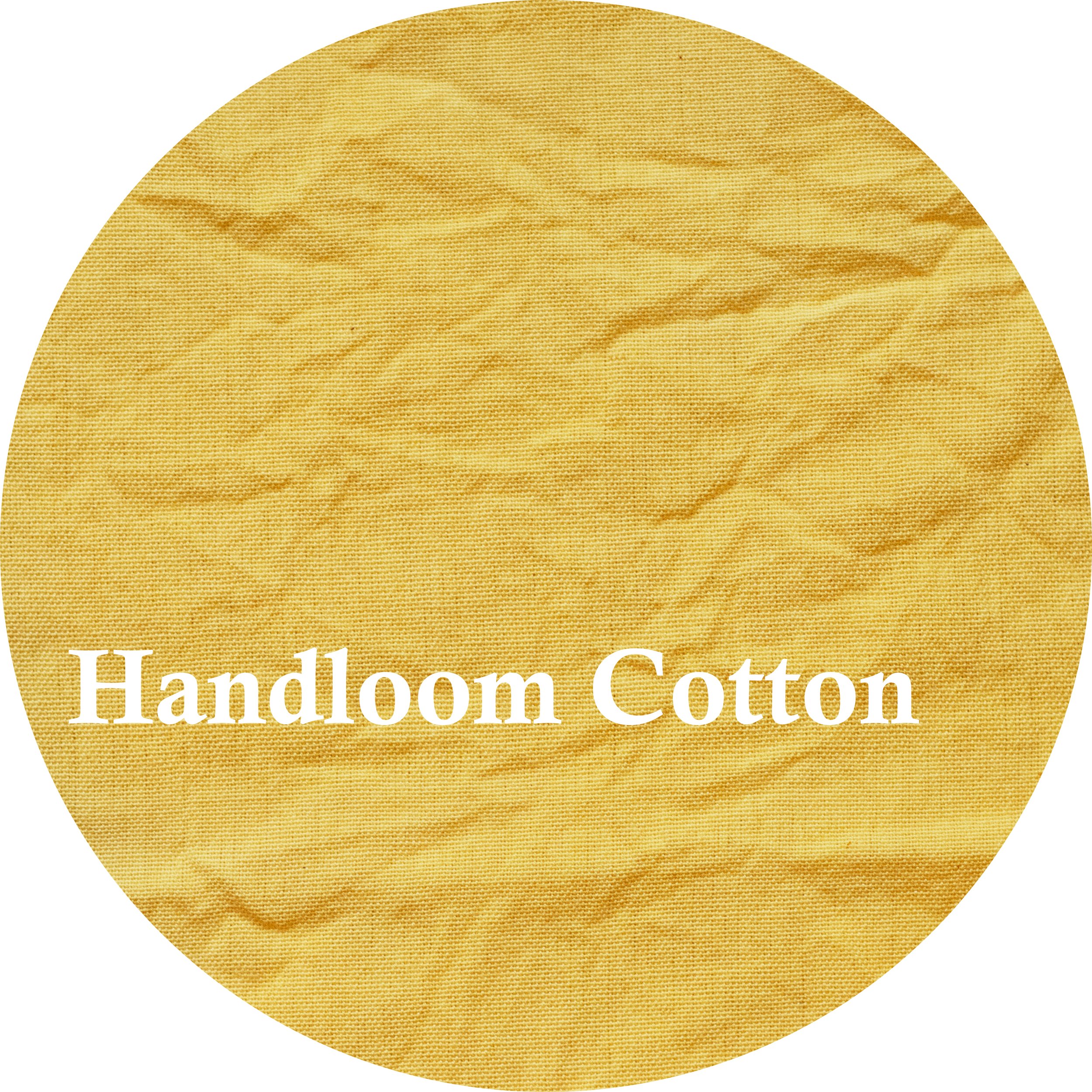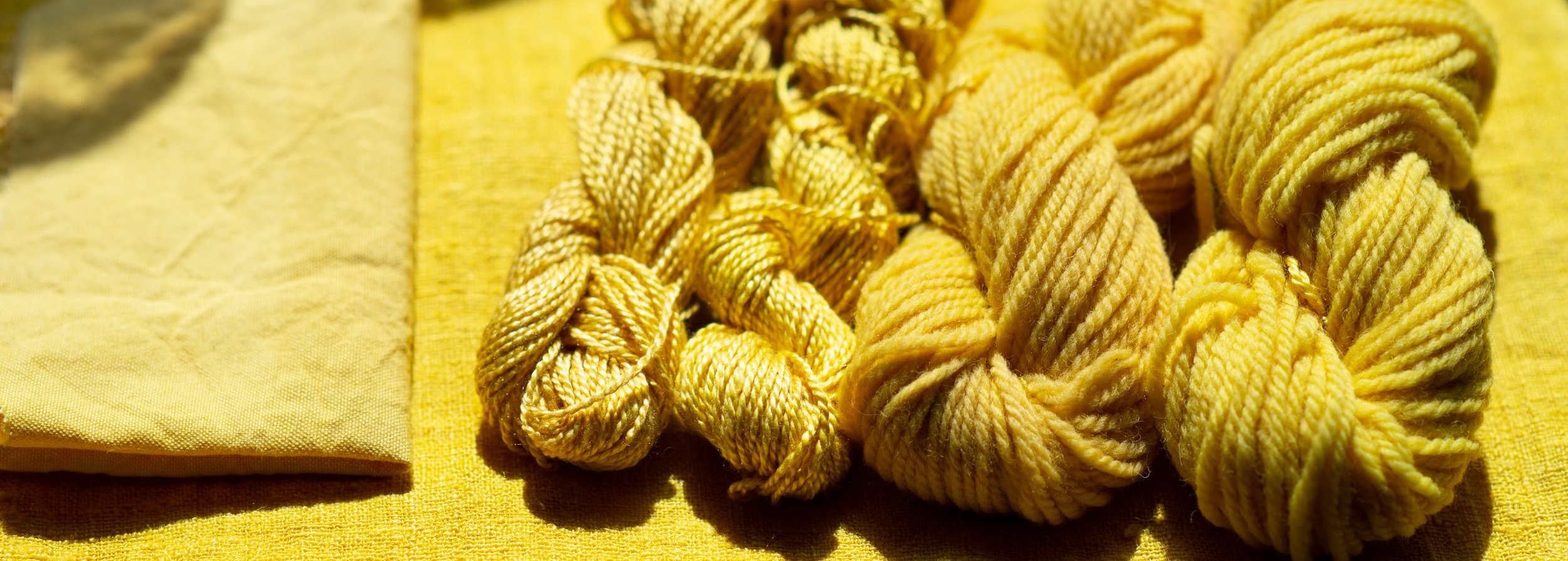
Osage Orange
A Guide to Osage Orange
Shepherd Textiles Osage Orange contains shavings from the heartwood of the Osage Orange tree, maclura pomifera. Osage Orange wood contains a powerful pigment called maclurin that can be simmered out and applied to natural fibers to produce a clear, lightfast yellow. It has a good affinity for all natural fibers, including cotton. Our Osage Orange shavings come from trees felled in the Appalachian states and the U.S. South. Use it at 30% weight-of-fabric for a bright, clear yellow, or use it as a base for overdyeing with other colors to get bright greens and oranges.
1. Background on Osage Orange
The Osage Orange tree, maclura pomifera, is a hardwood tree native to Oklahoma and parts of Arkansas and Texas. They produce a baseball-sized, scaly green fruit that gives the tree its name—anyone who grew up in the area can probably recall Osage Oranges or “horse apples” blanketing the ground in late summer. Although technically edible, the fruits are bland and rarely eaten. The tree itself, however, has been economically and culturally important for centuries.
The yellow heartwood of the Osage Orange tree is both strong and flexible, and many Indigenous peoples considered it to be the best wood for making bows. Indeed, there is some speculation that the fantastically wealthy Spiro kingdom (ca. 950-1250 CE) maintained its power by controlling the trade in Osage Orange wood (see Schumbach 2017). Later, during the 19th century, European Americans relied on Osage Orange trees to fence in their livestock. Planted close together, the trees create an impenetrable brush that was a secure way of penning stock until barbed wire was invented in the 1870s.
The heartwood of Osage Orange trees contains a strong yellow dye called maclurin, and the wood has been used for centuries as a homestead fabric dye. Osage Orange was never commercialized like the closely related fustic tree of South America (maclura tinctoria), and to this day is mostly used by craft dyers to produce a clear yellow with a slightly warmer hue than alternatives like weld. Shepherd Textiles Osage Orange contains shavings from trees felled in the Appalachian States and U.S. South, and is appropriate for use on all natural fibers.
A Midwestern Classic
2. Safety Precautions
DO NOT INGEST. This product is intended for textile dyeing, not as an herbal supplement.
Avoid eye contact. If eye contact occurs, rinse with cool water.
Not for use as a cosmetic additive; do not apply directly to skin or hair.
Open carefully to avoid spilling or creating dust. Work in a well-ventilated space, and avoid inhaling sawdust. Wear a mask if necessary while working with fine powders.
If a spill occurs, quickly wipe up with a paper towel or disposable rag.
Use only dye pots and utensils dedicated to dyeing. Do not use any pots, containers, spoons, tongs, thermometers, or other utensils that will be used for food preparation.
Osage Orange shavings, and all dye baths and mordant liquors made while dyeing, should be kept out of reach of children and pets. Use only with adult supervision.
Prop 65 Warning: The product contains wood dust, which is known to the State of California to cause cancer.
Shepherd Textiles, LLC is not liable for any misuse of this product or any unintended staining of your clothing, workspace, or other property. Use only as directed.
3. Recommended Supplies
Dye pot. Use a dye pot large enough to hold all your fibers, with plenty of room for them to move around and for the liquid to circulate freely.
Metal tongs. A pair of tongs is useful for stirring and taking fabric out. Use tongs dedicated to dyeing, and not for food preparation.
Rubber gloves. Wear rubber gloves while handling mordanted/dyed fiber before it has been rinsed.
Candy thermometer. The best way to keep track of temperature is to use a candy thermometer that clips to the side of the dye pot.
Scale. Use a scale to weigh out fiber, mordant, and dyestuff.
Alum mordant. The alum usually used for mordanting is aluminum potassium sulfate, also known as potash alum. It is the same alum that you can find in a jar in the spice section at the grocery store.
Fine mesh strainer. For straining out the wood after extraction.
4. Preparation: Mordanting with Alum
Osage Orange gives the clearest yellow on fibers that have been mordanted with alum. For best results, soak your fibers in water for a few hours before mordanting, so that the mordant will penetrate deeply and evenly. Make sure to weigh the fibers first, while they are still dry.
For wool fibers (wool, alpaca, etc.): Mordant with 10% alum and 11% cream of tartar.
Weigh out the fibers you plan to dye (while they are dry). Multiply that weight by 0.10 to calculate the amount of alum you will need, and 0.11 to calculate the amount of cream of tartar.
Fill your dye pot with hot tap water, leaving enough room for the fiber.
Weigh out the correct amount of cream of tartar and pour it into the dye pot. Mix with a spoon or metal tongs until it has dissolved.
Next, weight out the correct amount of alum and add it to the dye pot. Mix until well dissolved.
Gently place your fibers into the mordanting solution.
Heat mordant bath to 180°F and maintain heat for 1 hour. If you don’t have a candy thermometer, you will have to estimate the temperature. At 180°F, steam vapor will be rising off the water but it will not be bubbling. If your mordant bath starts to bubble, turn down the heat.
Stir every 15 or 20 minutes to make sure fibers mordant evenly. Otherwise, an uneven dye job may result.
After an hour, remove from heat and let cool to room temperature. Once cool, you can immediately proceed to rinsing, or you can leave the fibers to steep overnight in the mordant bath. This can dramatically improve results when dyeing thick yarn or tightly woven fabrics.
When ready to rinse, put on rubber gloves and gently squeeze excess mordant solution back into the pot. Rinse fibers well in lukewarm water. Set aside until ready to dye. Keep out of reach of children and pets.
Dispose of mordant solution according to local guidelines.
For silk: Mordant with 15% alum.
Follow the directions for mordanting wool described above. However, use 15% alum and omit the cream of tartar.
For cellulose fibers (cotton, linen, etc.): Treat with a tannin before mordanting.
Osage Orange gives good results on cotton and can be used without a mordant, but the color will be much deeper if the cotton is properly tanned and mordanted before dyeing.
Scour (clean) the cotton by adding 1 tsp of soda ash and 1 drop of dish soap to a 5-gallon dye pot. Add the cotton and heat to 180F-190F for an hour, stirring occasionally. Remove from heat, and when cool enough to handle, rinse and wring out well.
Apply Sumac Extract to the cotton to tan it. Fill your dye pot with just enough hot water for your fibers to move around freely - the more concentrated the tannin bath, the stronger the results will be. Dissolve 20% WOF Sumac Extract into the water. Add the cotton, raise the heat to 180-190F, and maintain for an hour. Remove from heat and allow to slowly cool to room temperature: for best results, steep overnight. After steeping, remove the cotton and gently squeeze out excess liquid (wearing rubber gloves), but do not rinse, as this may rinse out the tannins before they can bond to the mordant. For the very strongest results, hang the cotton up and let it dry before proceeding to mordanting.
Prepare an alum mordant bath using either (a) 20% weight-of-fabric alum + 5% soda ash (washing soda), or (b) 20% weight-of-fabric of aluminum lactate. Either option will create a relatively neutral pH mordant bath that bonds well with cotton.
Heat the mordant bath to 150°F or 160°F, place the cotton in it, and raise the heat to 190°F. Maintain for one hour, stirring occcasionally to make sure the fibers mordant evenly. After one hour, remove from heat. When cool enough to handle safely, remove fibers and rinse well in lukewarm water.
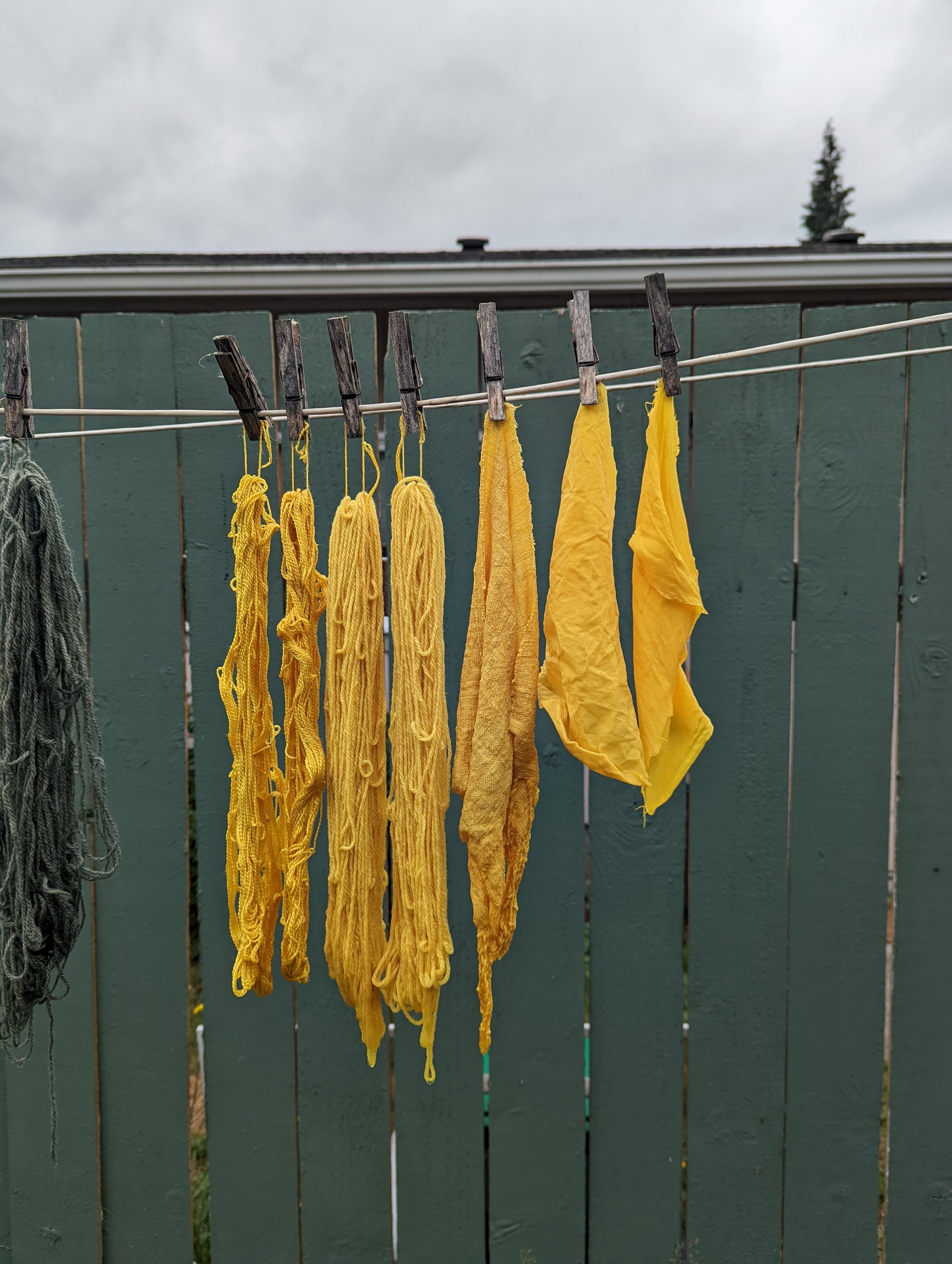
The Recipe
5. Recipe: Bright Yellow
Osage Orange gives a particularly clear, lightfast yellow. It tends toward a cooler shade than some other natural yellow dyes, especially on wool. Use Osage Orange shavings at 30% weight-of-fabric (WOF) on alum-mordanted fiber to get a deep color. To use it, you will need to simmer the dyestuff out of the shavings by doing a few simple hot water extractions.
Fill your dye pot about 1/3 full with warm water. Since you will be doing 2 or 3 extractions and adding them all together, you do not want to start out with a completely full dye pot.
Weigh out 30% weight-of-fabric (WOF) Osage Orange shavings (multiply the dry weight of the fabric by 0.30 to get the correct amount of extract).
Sprinkle the Osage Orange shavings into the dyebath. Don’t worry if they float on top; they will sink as the dyebath heats up.
Raise temperature to 180F. Maintain for two hours, then remove from heat and allow to cool to room temperature. If time permits, cover and steep overnight.
Filter the orange dyebath liquid into a holding container, like a plastic bucket or a second dye pot. Strain the liquid through a cheesecloth, an old t-shirt, or a very fine mesh sieve. Any wood that makes it into the final dyebath can cause splotches on your fabric.
Fill your dye pot 1/3 full of warm water again and put the Osage Orange shavings back in. Repeat the extraction process one or two more times.
After a total of 2 or 3 extractions, dispose of the wood shavings, rinse our your dye pot, and put all the collected orange-yellow liquid back in. This is your dyebath. Top off with enough lukewarm water so that the fibers can all move around freely.
Add your alum-mordanted, wetted fibers to the dyebath.
Raise the temperature to 180°F. Maintain for 2 hours, stirring every 20 minutes or so to make sure everything dyes evenly.
After 2 hours, remove pot from heat and allow to cool to room temperature. You can leave overnight to steep to deepen the color, but be sure there are no bits of sawdust or wood in the dyebath, as these may cause splotches if they come to rest on the fiber.
When finished dyeing, remove the fibers and rinse briefly in lukewarm water. You can either proceed immediately to rinsing with detergent, or hang the fabric up to dry first to help the color set. Make sure to hang it up in the shade somewhere where dripping dye will cause no damage. Direct sunlight may fade the color before it has had time set.
For final rinsing, we recommend using a PH-neutral detergent like Synthrapol, it is designed to wash out loose dye. Follow the manufacturer’s directions for best results. CAUTION: Osage Orange may bleed if not thoroughly rinsed out after dyeing.
Hang up to dry.
All images and text are copyright of Shepherd Textiles, LLC. Do not reproduce without written permission and attribution.


